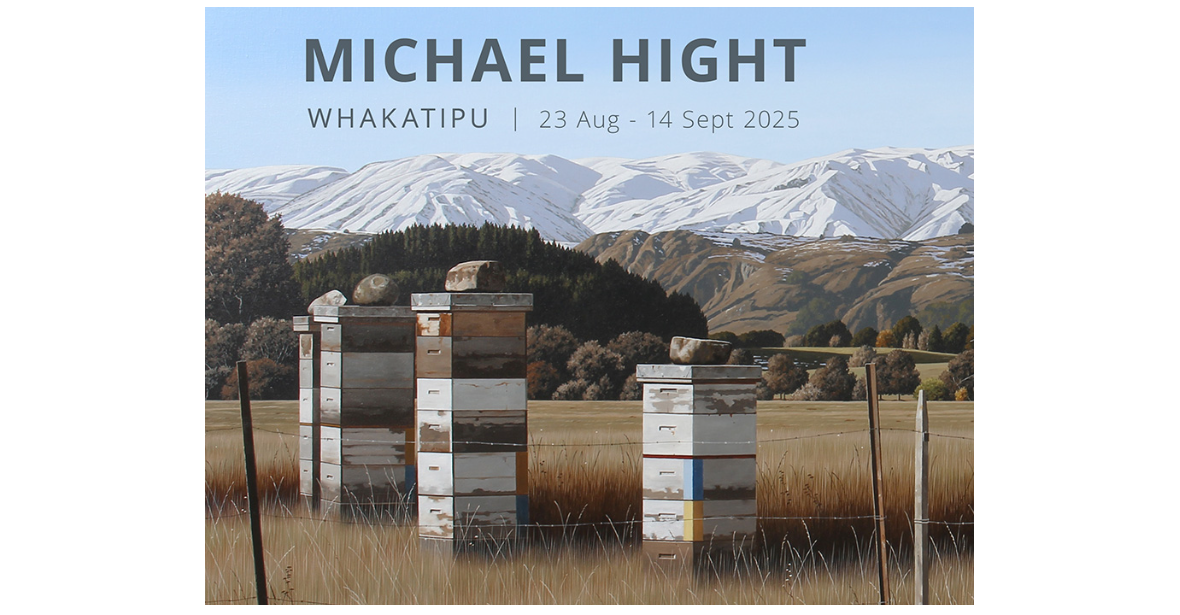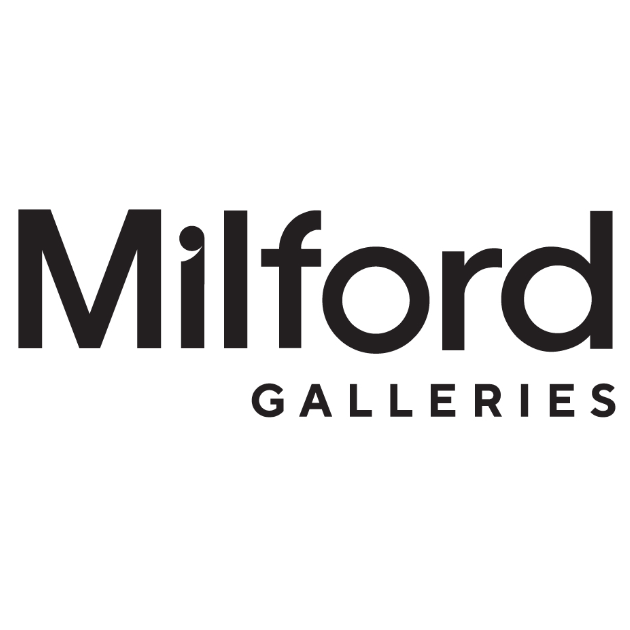
For many years, Michael Hight has had two major strings to his artistic bow: sweeping, grandiose New Zealand landscapes with a foreground focus on beehives, and "Nocturne/Black Shelf" still lifes featuring small assortments of farm equipment and other ephemera. As often as not, the two genres have sat in separate exhibitions, sharing their own languages.
It is only when we see the two styles alongside each other that the works create dialogues which reveal the hidden similarities in their messages. Although seemingly disparate, both series speak of man's attempt to control nature. The beehives and farmed grasslands are evidence of human activity and the subjugation of one species and small areas of the countryside. Similarly, the contents of the shelves reflect human interaction with nature —most notably the small farm tools which form a major part in these paintings.
The attempts at control have not been one-sided. Just as human enterprise has attempted to subjugate, so too the force and laws of nature have made their mark on humankind. The beehives are weathered, the items in the shelves have rusted, and the monumental mountains remain untouched and imperious. As with Denis Glover's famous poem Magpies, the efforts of humans come and go, but nature is eternal. The best that can be said is that a stalemate has been reached: human and bee have reached a symbiosis — homes provided and food crops planted in exchange for the amber gold of honey.
Another thing shared by the two series is that they are highly successful exercises in painting the effects of light. In the Beehive works, the natural light of the day is filtered and softened where it hits the mountains by the haze of aerial perspective, shown to masterful effect in works such as Kinloch Rd and The Remarkables. In the case of the Nocturnes, the dark, Dutch master-like backdrops focus attention squarely on the highlighted objects occupying the shelves.
From the ornate barometer of Kawarau River to the press of Hayes Creek, it is this light that defines the composition of the Nocturnes. Scale is played within these works, lending them a surreal edge; Hayes Creek also features a tree seeming to rise out of the machinery, along with a dish displaying a miniature field and beehives.
Hight is attracted to these ephemeral objects, found in second-hand shops while the artist travels to find his beehive scenes, as they are profound memory cues. Well used by their former owners, they are now imbued with a sense of rural time and contain a multitude of stories to be interpreted or imagined by the viewer. These are memory traces made tangible. The artist is playing with our perceptions and with the sense of time in these works. The paintings become vanitas pieces, chronologies of existence and elegiac poems to a lost time and way of life.
Perhaps the most audacious of the Beehive works in this latest selection is Rees Valley Road. Here, the roadway, often merely a peripheral feature of the paintings, becomes a sweeping asphalt river, restraining and framing the foreground beehives, which become almost subsidiary parts of the canvas. Attention is pulled to the old barn at the centre of the work, the eye drawn by the strong horizontal tree line and the diagonals of mountain slopes and the line of hives. Coupled with Hight's deft brushwork, this turns the work from a simple view of the Otago High Country into something compelling and grand.
Event dates & times
Sat, 23 Aug
Sun, 24 Aug
Mon, 25 Aug
Tue, 26 Aug
Wed, 27 Aug
Thu, 28 Aug
Fri, 29 Aug
Sat, 30 Aug
Sun, 31 Aug
Mon, 01 Sept
Tue, 02 Sept
Wed, 03 Sept
Thu, 04 Sept
Fri, 05 Sept
Sat, 06 Sept
Sun, 07 Sept
Mon, 08 Sept
Tue, 09 Sept
Wed, 10 Sept
Thu, 11 Sept
Fri, 12 Sept
Sat, 13 Sept
Sun, 14 Sept
Location
58 Gorge Road, Queenstown 9300
Price & Bookings
Free
Contact
